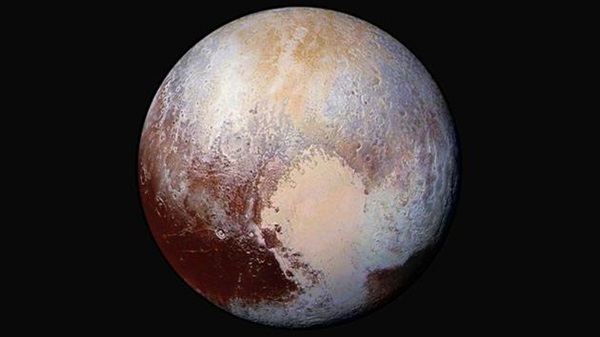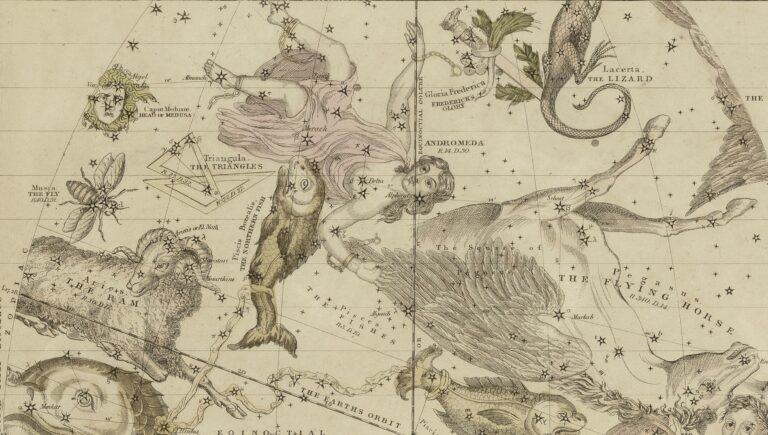Key Takeaways:
There’s a small chance that Pluto’s subsurface ocean might
harbor primitive life, and that could expand the search for habitable worlds out
into the rest of the Kuiper Belt.
Recent studies, drawing on a combination of computer
modelling and data from the New Horizons mission, suggest that there could be a
small subsurface ocean hidden beneath the ice of Sputnik Planitia, the round
icy basin in the western lobe of Pluto’s famed heart-shaped feature. If that
ocean exists, claims William McKinnon, professor of Earth and planetary
sciences at Washington University and coauthor on two of the recent studies, it
raises the questiason of whether there could be life under the nitrogen ice of
Pluto’s frozen heart. It’s a very, very long shot, but it raises intriguing
questions about the potential for life in wholly unexpected places on the
outskirts of our solar system.
“Life as we know it
would be very unlikely. But who knows what tricks nature has up her sleeve?”
said McKinnon.
What Kind of Home for
Life?
The chances of life existing on Pluto, and what form it
might take, would depend largely on what the ocean itself is made of, and
that’s still a subject for debate.
In a
recent Nature paper, planetary
scientist James T. Keane of the Lunar and Planetary Laboratory at the
University of Arizona asserted that it’s most likely a partially frozen watery
slush. That makes the chemistry of life possible, and temperatures might be
survivable for hardy enough microbes; on Earth, bacteria, fungi, and algae
survive beneath ice sheets at temperatures as cold as 23°F.
Of course, water alone isn’t sufficient for life to arise or
sustain itself; food chains require an energy source, which on Pluto would most
likely be something similar to deep-sea hydrothermic vents here on Earth
(they’ve also been hypothesized on Europa and other icy worlds), but there’s no
clear evidence to support that idea on Pluto yet.
On the other hand, University of California Santa Cruz
planetary scientist Francis Nimmo, with his coauthor McKinnon, claims that
Pluto’s ocean, if it has one, is most likely heavily laced with ammonia. Water
mixed with ammonia can stay liquid at temperatures much colder than pure water
can, which is important in keeping the ice cap above the ocean from flowing
like a glacier and destabilizing the whole thing. “A cold ocean stabilizes the
ocean uplift – prevents water ice from flowing and evening things out,”
explained McKinnon. “We say keeping the ocean to 200 K (-73 C) would do it. In
this case the ammonia concentration would need to be about 25%. Pretty wild if
true!”
Mixing the water with
methanol would have the same effect, but there’s no evidence yet for methanol
in the Pluto system, while ammonia has at least turned up on Charon and one of
the smaller moons. As Nimmo explains, ammonia dissolves well in water, but as
water re-freezes, the ammonia gets left behind, so the remaining liquid becomes
very rich in ammonia.
At that concentration, Pluto’s ocean would have a viscous,
syrupy texture. It would also have much more ammonia than life as we know it could
tolerate. “What I think is down there in
the ocean is rather noxious, very cold, salty, and very ammonia-rich – almost a
syrup,” said McKinnon in a statement. If life did manage to find a foothold in
a sea of antifreeze, it would most likely be very primitive, possible even
pre-cellular, according to McKinnon.
Is There Any Home for
Life At All?
And that’s assuming there’s really an ocean on Pluto at all,
which is far from a settled question. Another study in Nature this week claims that, contrary to what Nimmo and his
colleagues wrote, Pluto’s orientation may not require a liquid ocean after all.
The most widely accepted theory for Sputnik Planitia’s
formation, at this point, is that a Kuiper Belt Object about 125 mile-s wide
slammed into Pluto 4 billion years ago. The impact caused liquid water beneath
the surface to rebound, welling upward to form a subsurface ocean beneath an
icy shell, which kept accumulating layers of nitrogen ice over the years –
enough to insulate the ocean and keep it liquid.
Nimmo and Keane argue that that’s necessary in order to
explain why Pluto effectively rolled over in space to put Sputnik Planitia
opposite Charon. The basin’s layers of nitrogen ice alone, they say, wouldn’t
add enough mass to cause the shift.
However, in another
paper in Nature, University of
Maryland planetary scientist Douglas P. Hamilton and his colleagues argue that
Pluto could have shifted into its current position even without a subsurface
ocean to add weight to the basin. The researchers say that ice would have
accumulated in the region of Sputnik Planitia even without an impact basin to
collect it, because the region sits at the coldest latitude on Pluto, right around
25°
north. Over time, the rocky crust beneath Sputnik Planitia would have sagged
under the weight of all the ice, creating the basin we see today. Here on
Earth, Greenland is home to similar depressions in the crust, so there’s a
plausible precedent for it.
No impact means no
rebound of subsurface water to form the hidden ocean. “My model works with or
without an ocean,” Hamilton argues, in contrast to Keane and NImmo’s models.
“The key is that the
processes that I describe happen early while Pluto is still spinning quickly,”
Hamilton said. “This allows the mass of the ice cap to cause the planet to stop
spinning when the ice cap is either directly underneath Charon (which did not
happen) or exactly opposite Charon (which did).” That doesn’t rule out the
presence of an ocean, but if it’s possible for Sputnik Planitia to be locked in
its current position without one, that’s a huge blow to the main piece of
evidence for a Plutonian sea.
“Without a large
impact, there is no ocean upwelling. There could, however, still be an ocean,”
said Hamilton. “I would characterize the situation as no strong evidence either
for or against an ocean.”
Dueling Models
The question is far
from settled. “If there is no ocean uplift right now, or uplift of something
dense at depth, then Sputnik Planitia is a negative gravity
anomaly (it is a hole in the ground), and as such it would prefer to be at
either pole, not aligned on the tidal axis,” said McKinnon.
Nimmo says that Hamilton’s model is possible, but would
require a much thicker layer of nitrogen ice than Sputnik Planitia actually
seems to have. “You can get a positive gravity without a subsurface ocean, but
you need a really thick nitrogen ice cap, about 40 km or more, to make that
happen. I don’t know how plausible such a thick nitrogen layer would be,” he
said. “In any case, having an ocean still helps, because it’s much easier to
reorient an ice shell, decoupled by the ocean from the interior, than it is to
reorient the entire planet.”
And of course, at this point it’s a matter of dueling models
and interpretations of the data from New Horizon. Pluto’s subsurface ocean
remains hypothetical at this point. “All of these ideas about an ocean inside
Pluto are credible, but they are inferences, not direct detections,” said
McKinnon. Confirming the presence of a liquid ocean beneath Sputnik Planitia’s
ice would require gravity measurements or subsurface radar soundings, both of
which would require another mission to Pluto – something that’s not currently
on the table.
Way Beyond the
Goldilocks Zone
But the possibility of liquid water, even if it’s slushy or
mixed with a heavy dose of ammonia, on Pluto raises the question of
habitability in a way that would have been unthinkable before New Horizons. It
also means that other Kuiper Belt Objects around Pluto’s size could also host
liquid oceans, whether of water or something much more exotic.
And if oceans of more unusual chemicals, like ammonia, methanol, or methane, turn out to be
common, that could fuel astrobiologists’ speculation about life forms arising
with alternative biochemistries evolved to thrive in such environments. “As
with the methane seas on Titan – Saturn’s main moon – it raises the question of
whether some fairly novel life forms could exist in these exotic, cold
liquids,” said McKinnon in a statement. The possibility is intriguing, but
likely to remain in the realm of speculation for the foreseeable future, since
investigating would require another Kuiper Belt mission, for which there are
currently no plans.
Even if life in those oceans is a long shot – which it is –
the does challenge long-standing assumptions about what regions of a solar
system might be potentially habitable, chipping away at the uniqueness of the
inner Solar System’s so-called Goldilocks Zone.
“If our story is correct, then oceans in large KBOs may also
be quite common, too,” said Nimmo. “It’s hard to say what this means in terms
of life, but it certainly means that the ‘potentially habitable’ region now
extends to the outer edges of the solar system.”










